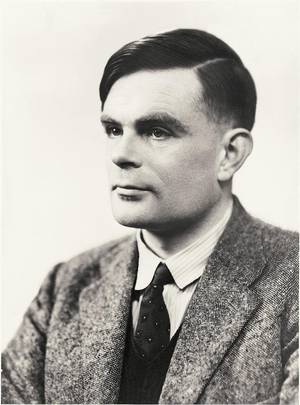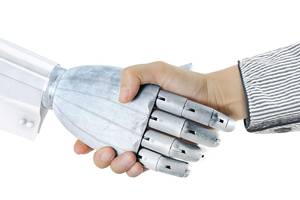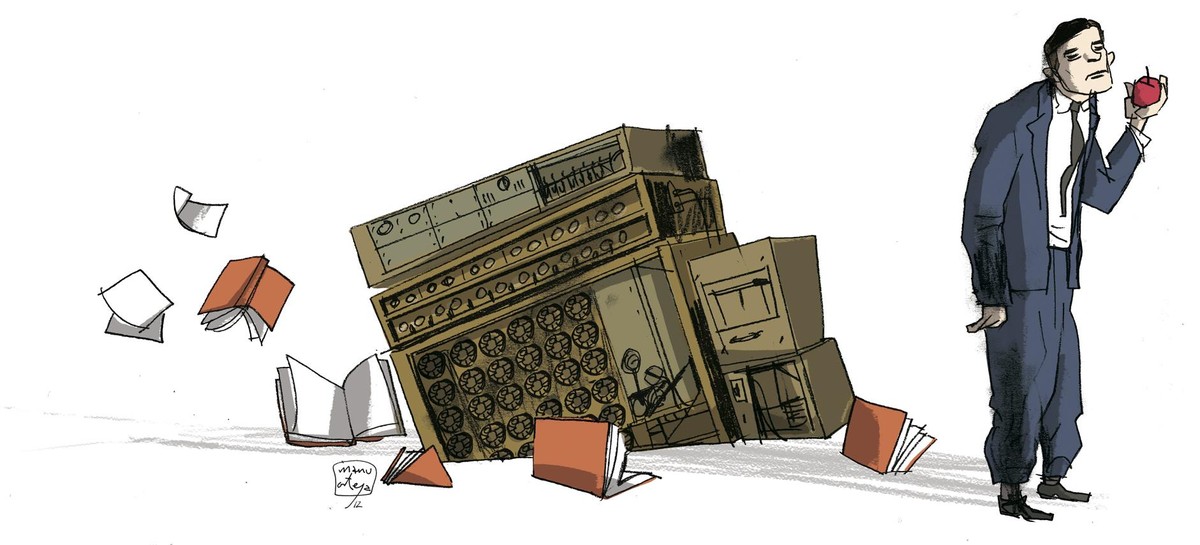ALAN TURING 100 YEARS: What computer science owes you
2012/06/01 Roa Zubia, Guillermo - Elhuyar Zientzia Iturria: Elhuyar aldizkaria
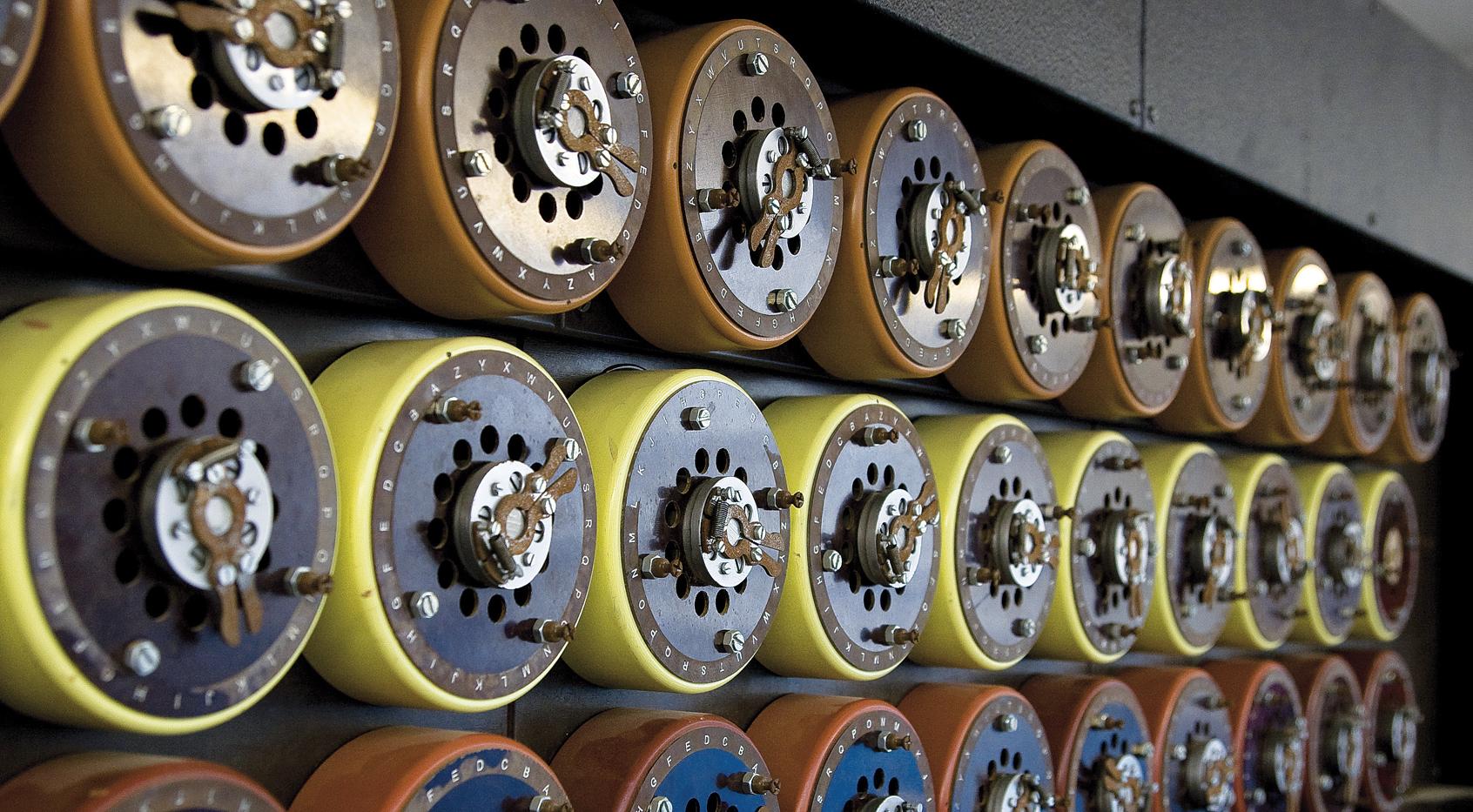
Why not? A machine could work by reading data from a long tape, calculating from that data and recording the calculation result on the same tape. But for this to be possible, the machine must use an algorithm, a programmable algorithm. Put simply, this was the argument that Alan Turing published in the article "On computable numbers" of 1936. The device he proposed, known as the Turing machine, has been one of his great contributions, one of the pillars of computer theory.
"The mathematical foundations of computer science complete a special case," says Jesús Ibáñez, professor of computer science at UPV, "in most engineering, first comes the need, then the technique and then the theories to overcome the obstacles. In computer science, thanks to Turing and other thinkers, the theory was known when computers were still a dream." This idea has been very prominent by computer scientists in the celebration of the centenary of Turing.
Turing machine was not necessarily a physical device, although the same apparatus is feasible. The main value lies in the concept; the interpretation that is often made is the CPU description of current computers. "For me it's much more than that," says Ibáñez, "because the Turing machine has inside the basic concept of the algorithm."
The algorithm is not just a step procedure needed to do something. The aim of the concept prior to turing is greater. "Leibniz had a very beautiful metaphor," explains Ibáñez. "When your scientific philosophical project triumphed, we would not think about it, but we would calculate it. To resolve a difference between two knowledge, let's figure out what the answer is." The algorithm would be a procedure to convey any wisdom, a specific language to convey ideas without ambiguity.
The mathematicians of the Turing era were looking for a way to translate any knowledge into the language of logic, which allowed to create algorithms and process them with a machine. "They were not looking for computers, but electronic brains; they did not want to mechanize our physical tasks, but our mental tasks," says Ibáñez.
Turing himself sought it. He worked a lot in this field, defined his machine with great success because it serves to analyze the idea of computability in a very simple way. "When any type of computing is currently invented, the first thing that is done is to claim that it is equivalent to the Turing machine. Why? Because more than that has never been achieved." And it is that Turing studied mathematically whether all wisdom was computable or not. And he realized that no. You cannot encode all knowledge with an algorithm. And it was the end of the old idea of the algorithm and the basic idea of computer theory. It was 1936.
German messages
Throughout the 1930s there was a strong political tension between Germany and the rest of Europe. In 1939 political tension became war. Until then England, France and Poland worked together to decode the messages of the German army. But Hitler entered Poland and soon occupied half of France. There were only English decos. They had to reinforce their decoding capacity, for which Turing and other mathematicians were taken to Bletchley Park, the secret headquarters of the decoders.
The Germans were encoding messages with the Enigma machine since 1930 --a Turing machine. The device encoded the message using electromechanical wheels. Once a letter was encoded, the wheels rotated and created the code of the next letter according to another code. Therefore it could not be decoded based on the frequencies of the letters. Before World War II, the Poles worked to decode the German messages. They developed a machine called Bombe. But they entered the war and the Germans complicated the coding system by adding more wheels to Enigma.
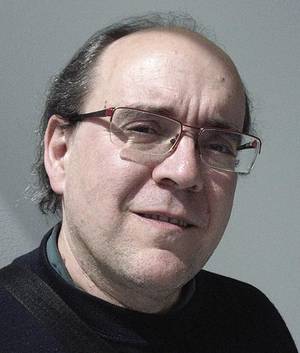
"Cryptography is always a war against time," says Ibáñez. Turing and his companions had to do it quickly. They knew that Enigma never coded a letter with herself. An original R never created an R in the encoded message. And once the Germans sent a test with the repeated letter T. Decos realized this because T did not appear in the message. In addition, concrete phrases like Heil Hitler appeared in the messages. They worked with such clues and developed a machine to decode German messages, which they also called Bombe. Partly because of that, the Germans lost the war. You also want to celebrate at Turing.
And not just for winning. Turing's work has been very quiet for years. On the one hand, because for many years the work done during the war was a secret. And also, because of Turing's homosexuality, because the English themselves did not extend their merit. It took years to turn around and the centenary celebration wants to contribute to it.
A thoughtful test
After the war, computer research focused on other military objectives. But Alan Turing's theoretical interest was not reduced. Can a machine think? To this question he answered affirmatively in the article "Computing Machinery and Intellingence", in 1950. And if a machine has the capacity to think, he said, how would we differentiate it from a person? Turing's proposal consisted of a test, the famous Turing test. It is a conversation between machine and person that is analyzed by a second person. If the latter does not distinguish between the machine and the person, that machine has passed the Turing test.
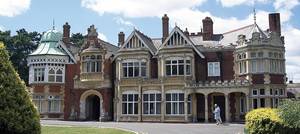
In 2012 there are still no such machines, but there are experts who believe that in the coming decades one will be achieved. Others are not sure. There are already programs that win chess to any human being, but it does not exist to play poker.
"Artificial intelligence sometimes achieves great success in different fields. If this area is very limited, it will not succeed in other areas." Ibáñez considers that the way to overcome the Turing test cannot be the specialization of the machine. And in order not to lose the value of the test itself, the test judge himself should not know that he is doing the test. Throughout the talk "we would have to realize if the other is a machine or not, without looking for it by itself".
Every year there is a contest to try to pass the Turing test. In the 2011 competition, the winner was Rozette, the robotic interlocutor of programmer Bruce Wilcox, who had the most chances to pass the test. One of the judges wrote in NewScientist magazine that the result remains "disappointing," and that it is easily discernible that programs are not human.
Blade Runner (Philip K. Do androids dream with electric sheeps by Dick? based on the book) presents androids about to overcome a similar test. It is science fiction. In fact, today computer applications use the opposite, that is, the machines and current programs are not able to overcome this type of test, so it is enough to apply a simple test to rule out automatic advertising (spam a). The usual example on the Internet is the CAPTCHA system, which refers to Turing on its behalf: Completely Automated Public Turing test to tell Computers and Humans Apartamentos is the acronym.
However, programmers still try to imitate a dialogue between human beings. Precisely, coinciding with the centenary of Turing's birth, the 2012 competition will be held at Bletchley Park, where Turing performed his decoding work during World War II.
Mitchell Kapor and Ray Kurzweil bet on $10,000. The first does not believe that there are machines that pass the test for the year 2029 and the second thinks that yes.
The Turing test aims to measure the intelligence of a machine by analyzing its ability to think. In any case, although a program exceeds the test, there is no possibility that it is intelligent light.
Jesús Ibáñez himself has doubts about how to overcome the test: "Will it be overcome? Well according to the passion we put it. If we know what artificial intelligence is and we know what the machine can be good at, then we can look for the machine's weaknesses. For example, if the weak point of the machine is that it does not know how to imitate the singing of the birds, then we will ask and say that it is necessary to overcome the Turing test. We will look for tricks to maintain our pride in species."
It has been a century since Turing was born and his test has not yet been passed. No one knows how many years will be needed, but experts are convinced that it will be before the next centenary.

Gai honi buruzko eduki gehiago
Elhuyarrek garatutako teknologia




